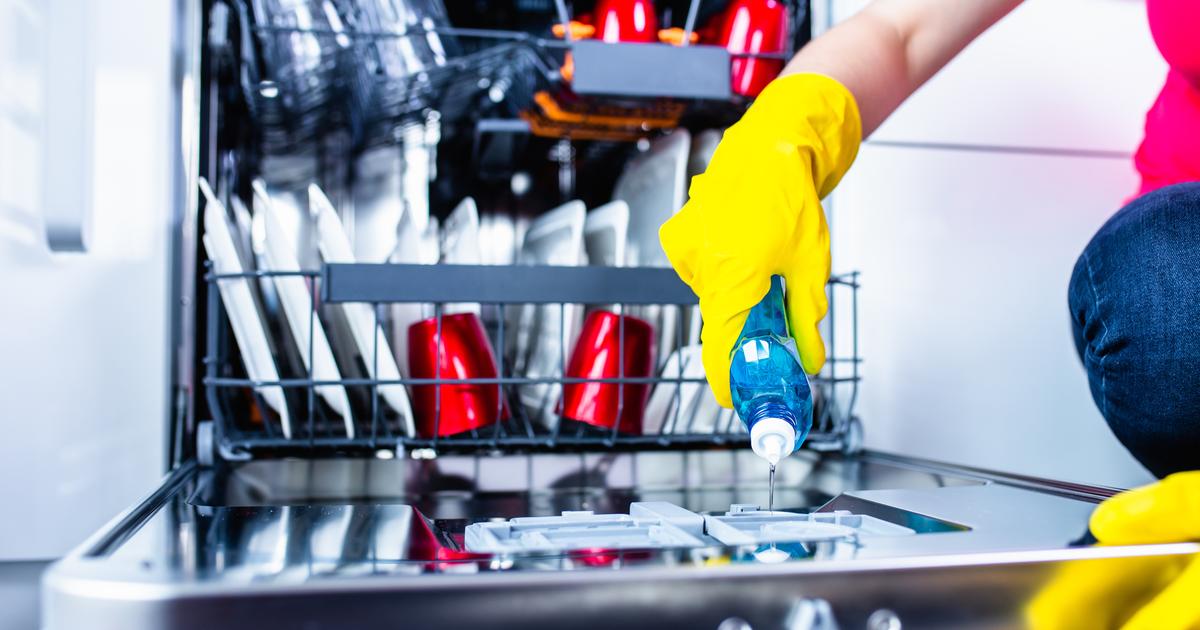To make your dishes shine and extend the life of your dishwasher, using a
rinse aid
is essential in addition to your classic detergent tablets.
For what ?
Because it improves drying efficiency and ensures the shine of your dishes.
Discover its essential role and learn when and how to add it for optimal washing results.
To discover
February: what vegetables and fruits are in season?
What is dishwasher rinse aid?
Dishwasher rinse aid ensures shiny dishes and extends the life of the appliance.
It is composed of surfactants, acids and alcohol.
During the final phase of the wash cycle, the cleaning rinse aid acts and:
Accelerates the drying process of dishes, allowing water to slide off more easily and ensuring optimal shine.
Eliminates the last residues, stains, dirt and traces of limescale.
Prevents the formation of water droplets, streaks and white residue.
Makes glasses and plates shine.
It therefore acts as a complement to classic washing products (tablets, detergents, capsules, gels, pods) for washing dishes.
Please note that there are environmentally friendly rinse liquids on the market, based on ingredients of plant origin, essential oils and fruit alcohol, guaranteed to be free of phosphates and dyes.
These rinse aids offer an eco-friendly alternative without compromising effectiveness.
Where, how and in what quantities should you put the rinse aid?
Located on the door of the appliance, the rinse aid reservoir is accessible by unscrewing its cover, pressing the latch and pulling on it.
Fill it to the maximum level to avoid frequent refills.
Wipe up any spillage.
Some dishwashers offer a usage level setting.
Set it to a medium level to start.
Watch for any traces left on the dishes.
If you see blue streaks, this indicates excess fluid while white streaks indicate insufficient fluid.
Consult the instructions for your home appliance to adjust the settings.
In areas where tap water is very hard, the use of rinsing liquid in addition to all-in-one tablets is recommended.
However, in fresh water areas, use it sparingly to avoid unwanted streaks.
This way, you will optimize the effectiveness of the rinse aid to obtain impeccable dishes after each wash cycle.
Also read: Is dishwater or laundry water toxic to plants?
When should you add rinse aid to the dishwasher?
Some dishwasher models include an indicator light to let you know when it needs to be refilled, but not all.
Also, if your dishwashing machine is showing signs of diminished performance, such as insufficient washing or persistent white streaks on dishes, it's time to check the rinse aid.
Water marks, especially in areas with hard water or very hard water, can also indicate an empty rinse aid reservoir.
Be sure to adjust the rinse aid after several washes to avoid scale deposits on the glasses.
By ensuring a constant supply of regenerating salt and rinse aid, you optimize the washing capabilities of your appliance and guarantee impeccable results every time.
Regularly adding rinse aid to your dishwasher therefore guarantees rapid drying, clean, streak-free dishes, and keeps the appliance functioning properly.
The cost of rinsing liquid is quite high (between €4 and €10) but there are economical and ecological cleaning products.
White vinegar, for example, anti-limescale, degreaser, disinfectant and deodorizer, proves to be an effective solution for obtaining the same shine on your dishes.
You can also opt for large packaged products such as cans to reduce costs, but also reduce your waste.

